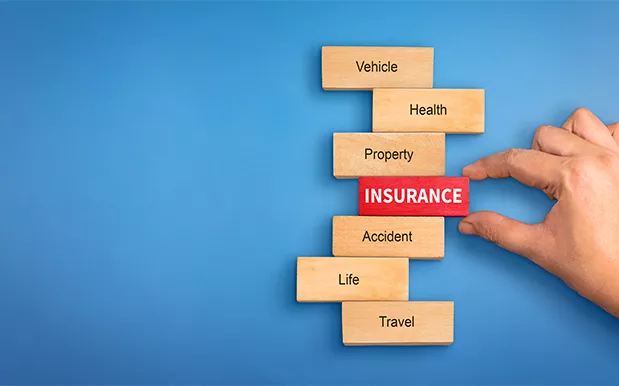Understanding what full coverage means in auto insurance can be confusing for many drivers. The term “full coverage” is often used in everyday conversation, but it does not have a single standardized definition in the insurance industry. Typically, full coverage auto insurance refers to a combination of different coverages that provide a broad level of protection for drivers, their vehicles, and others on the road.
Auto insurance is essential for protecting yourself financially in the event of accidents, theft, or damage. But what exactly does full coverage encompass? What are the limits, exclusions, and nuances that drivers need to know? This comprehensive article will break down the components of full coverage auto insurance, how it works, and how to determine if it’s the right choice for you.
With the increasing complexity of the insurance market, understanding insurance policies and their coverage is more important than ever. By the end of this article, you will have a clear picture of what full coverage auto insurance entails and how to make informed decisions when purchasing or renewing your policy.
What Is Full Coverage Auto Insurance?
Full coverage auto insurance is not a single policy but rather a combination of several types of coverage that together provide extensive protection. Generally, it includes:
Liability Insurance: Covers damages and injuries you cause to others in an accident.
Collision Coverage: Pays for damage to your vehicle resulting from a collision with another vehicle or object.
Comprehensive Coverage: Covers damage to your vehicle from non-collision events such as theft, vandalism, natural disasters, or hitting an animal.
Uninsured/Underinsured Motorist Coverage: Protects you if you are in an accident with a driver who has insufficient or no insurance.
Together, these coverages form what is commonly referred to as full coverage. However, exact definitions can vary depending on the insurer and state regulations.
Liability Insurance: The Foundation of Full Coverage
Liability insurance is mandatory in most states and is the baseline for any auto insurance policy. It covers bodily injury and property damage that you cause to others.
Bodily Injury Liability: Covers medical expenses, lost wages, and pain and suffering for other people injured in an accident you caused.
Property Damage Liability: Pays for damage to other people’s property, typically their vehicles or structures like fences or buildings.
Liability coverage does not protect you or your vehicle. It is designed to cover damages for which you are legally responsible.
Collision Coverage: Protecting Your Vehicle in an Accident
Collision insurance is an important component of full coverage because it pays for repairs or replacement of your vehicle if you are involved in an accident, regardless of fault. This coverage is especially valuable for drivers with newer or more expensive vehicles.
Collision claims typically cover:
Accidents with other vehicles.
Collisions with stationary objects such as poles or guardrails.
Single-car accidents where the vehicle flips or hits an object.
Keep in mind that collision coverage requires you to pay a deductible before the insurer covers the remaining repair costs.
Comprehensive Coverage: Protection Beyond Collisions
Comprehensive coverage protects your vehicle from damages caused by events other than collisions. This includes:
Theft or attempted theft.
Vandalism.
Natural disasters such as floods, hail, or fire.
Damage from falling objects or animals.
This coverage is especially important in areas prone to natural disasters or high crime rates. Like collision coverage, it typically comes with a deductible.
Uninsured and Underinsured Motorist Coverage
Uninsured/underinsured motorist coverage is designed to protect you if you are involved in an accident caused by a driver who does not have adequate insurance. This coverage can pay for your medical bills and damages if the at-fault party cannot cover these costs.
This protection is essential because many drivers on the road either do not carry insurance or have coverage limits too low to fully compensate for serious accidents.
Additional Coverages Often Included in Full Coverage
Some policies marketed as full coverage may also include optional add-ons such as:
Medical Payments Coverage: Pays for medical expenses for you and your passengers regardless of fault.
Personal Injury Protection (PIP): Extends medical payment coverage and may include lost wages and other expenses.
Rental Car Reimbursement: Covers the cost of a rental vehicle while your car is being repaired.
Roadside Assistance: Provides help for flat tires, lockouts, or towing.
These extras increase your protection and convenience but also raise your insurance price.
How Full Coverage Auto Insurance Premiums Are Calculated
The price of full coverage auto insurance depends on numerous factors, including:
Your driving history and claims record.
Age and gender.
Type, age, and value of your vehicle.
Location and how much you drive.
Credit score in some states.
Chosen deductibles for collision and comprehensive coverage.
Insurance trading competition and insurer pricing strategies.
Understanding how these elements affect your premium helps you find the best balance between coverage and cost.
Is Full Coverage Auto Insurance Worth It?
Full coverage is especially valuable for drivers who:
Own newer or expensive vehicles.
Have outstanding auto loans or leases.
Want to minimize out-of-pocket repair expenses.
Drive frequently or in high-risk areas.
However, if your car’s value is low, or you can afford repairs yourself, you might opt for liability-only insurance to save money.
Tips for Choosing the Right Full Coverage Auto Insurance Policy
Compare quotes from multiple insurers.
Check coverage limits and exclusions carefully.
Consider increasing deductibles to lower premiums.
Ask about available discounts for safe driving, bundling, or security devices.
Review customer service and claim handling reputation.
How Full Coverage Fits into the Insurance Market
The availability and pricing of full coverage auto insurance reflect the broader insurance market dynamics. As insurers compete and innovate through insurance trading, consumers benefit from tailored policies and flexible pricing. Staying informed about market trends helps drivers optimize their insurance decisions.
Conclusion
Full coverage auto insurance provides comprehensive protection by combining liability, collision, comprehensive, and uninsured motorist coverages. It offers peace of mind against a wide range of risks that drivers face on the road.
While it may come at a higher insurance price compared to basic liability coverage, full coverage is often worth the investment for those who want to safeguard their vehicles and finances effectively. By understanding what full coverage covers and how premiums are calculated, you can make educated choices and secure the best possible protection tailored to your needs.
Related topics:


































